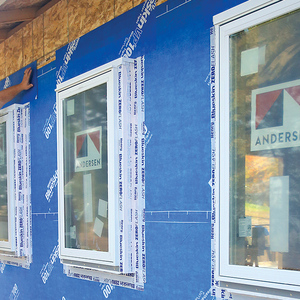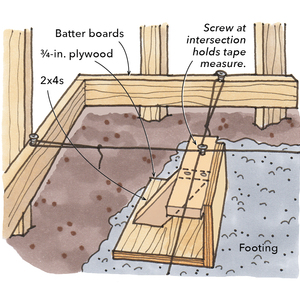ALL: Building a patio slab. All my utilities were planned for this; in conduit & buried deep enough – for the original plans. Now that we put shovel to earth, the conduits aren’t deep enough. I have my main electrical supply conduit, Telephone service, electric supply line for well house & water lines in same trench, but separated from one another. Power company required 2 1/2 inch gray PVC conduit; it would be at least 6 inches below new slab. Water line I can drop an extra 6 inches w/ no sweat.
Now for the challenge: I have to drop the 220 line for my well house by that same 6 inches. Obviously it will have to be lengthened! Splicing a section of PVC 1 inch conduit is no sweat – BUT, how do I splice in an extra section of power cable? What are the requirements on a splice underground? It will be at least 3 feet below the surface. Does it have to be accessible like J Boxes in dwellings? That makes sense. Need an answer from someonw who knows what they are doing. That includes nearly everyone out there except me. How do you waterproof the splice, since commonsense tells me that water will eventually get into the line? I recall seeing my well drillers splicing the supply line going down the well casing w/ something that they said was waterproof. (Since they did this job in the middle of a hot July, I wasn’t able to ask them just exactly how cold a well digger’s adz gets.)
Thanks in advance for the usual great advice, interspersed w/ the usual pile of crap – which is usually more interesting than the advice, anyway.
Don



















Replies
Why do you have to drop the conduits/pipes? You don't give any depth dimensions. There is a special rule in the NEC Code about conduit under concrete: 2" of concrete cover is all that is required. [at least for patios]
Now you're talking about the Utility requiring 2 1/2" conduit; after the meter, this is not their problem. Before the meter, if you have one at your outhouse, then they would do the splicing or pull new wires.
~Peter
Article 300 of the 1999 edition of the National Electric Code has a table 300-5, which lists minimum cover requirements for circuits under various conditions. If your patio is 2" thick concrete, it says the top of the conduit has to be 12 inches below the top surface of the concrete. If the patio is 4" thick concrete, the top of the conduit has to be 4" below the top surface of the concrete (or in other words, the conduit can be right underneath the concrete.) It also says the conduit needs to be 18" deep where it goes across your yard, but I suppose local requirements may vary.
At any rate, make sure your conduit is deep enough the entire distance to the well. Also, the electric utility's requirements for their cable don't necessarily apply to the feed to your well (I assume it runs from the panelboard in your house out to the well, so it's your responsibility and not the utility's.)
If the wire is in a conduit you can only splice it in a junction box. There are splice kits for direct buried wire, but they are tricky to use and don't apply in this instance anyway.
Is there any slack in the cable at either end, either at the panelboard or at the well? The well guys usually leave some extra wire in top of the pitless adapter if they can, but there's no guarantee they did in your case. If so, you may be able to add a little extra conduit and still make the wire work. It sounds like you have a submersible well - does the cable and conduit from the house run directly into the pitless adapter at the wellhead? You mentioned a wellhouse, so I suppose that instead it may come up inside the wellhouse and first go to a local disconnect switch or something.
If there isn't any extra slack in the wire, you may be able to add a junction box below the panelboard in the house, or maybe put one in the wellhouse - either one would be probably easy enough to do and they'd be above grade and out of the weather, but without seeing the whole situation with my own eyes I can't make any specific recommendations.
Stuart: Obviously not clear. Power Co. will be deep enough to meet code. Top of their (Actually my conduit, since they had me place it to their specs) conduit is about 9 inches BELOW the bottom of the patio slab. That one is no sweat. Boy, that's a relief! Phone line is in same trench w/ power conduit, but above it. I will re-lay that conduit & have the phone co. run a new cable. They are going to hate that - it's a very tight fit, & they nearly had a hisnea (as opposed to a hernia) when they pulled the first cable.)Patio will be 4 inches thick, so all I have to do is get my conduits that run to the well house below the slab. I have to drop them about a foot. The way they are now, they start out OK at the house; are still OK at the edge of the original patio design, but start to rise immediately at the edge of the original design, to be about a foot too high at the edge of the revised design. (The ground rises quite steeply at this point, and the conduit is a standard 24 inches below grade.) What I want to do is drop the conduit - but that will lengthen the run by about 6 inches. I also have to lengthen the conduit because it will also be about 6 inches too short. To do that I have to cut the cable. There is a clinker stuck in the grate, also - some dork on a Bobcat whacked the well house electrical conduit and split it, but spared the wires, so that should be fixed while I'm at it. There is absolutely no slack. (That is my fault - I laid the wires and didn't think ahead.) The cable run is about 200 ft and terminates in the well house at a sub panel that supplies power to lights, water treatment system & eventually the well. A splice looks to be the only way. Actually two splices about a foot apart, since there is no slack. Now these splices will be about 4 feet below ground, since they will be right at the edge of my patio slab, which is to be bounded by a wall to account for the elevation change. Do I have to have daylight access to them, or can I mark them w/ a concrete marker & bury them? I could put them under the slab & have access w/ a box like they use for access to water sprinkler system controls; then they would only be 5-6 inches below daylight, & even the urologist w/ the largest fingers known could get his hands into them. I will already have two of those in the slab, in the same general area. Not a real problem, since this area is not going to be used for social purposes, but to support a tool shed, portable generator & other necessities.Nothing is ever easy!Thanks for the help.DonThe GlassMasterworks - If it scratches, I etch it!
I think I get it now - you're lowering the grade level to put in the new patio.
There are electrical junction boxes (also known as pull boxes or handholes) very similar to the water sprinkler box you mentioned that are designed to be set flush in the ground. One manufacturer is Quazite, here's a link to their website: http://www.strongwell.com/PolymerConcrete/Quazite/5BoxStyles.HTM.
These handholes are typically open on the bottom, so water doesn't collect inside them. You set them in a bed of gravel so they'll drain, the conduits stub up inside the box from underneath, and you make the splices. The splices will need to be waterproof since they'll be below grade, what kind of splice you use will depend somewhat on the wire sizes and what's commonly available in your area. Hopefully some of the electricians around here will chime in with some good advice on brands. Also, the ends of the conduits inside the handhole should be plugged with conduit seal, it's a non-hardening putty sort of stuff you can get from an electrical supply house.
Do you really need to have two splices? I'd think you could put the handhole in the patio and then just run new wire from there into the house. You'd have to buy a few more feet of wire but the fewer splices you have, the better.
Stuart: Your answer is what I expected - I just wasn't sure about the details. Knew there had to be some solution! While taking a shower since writing the last note. I thought about pulling the wire into the house. It's only about 35 ft of wire. That's cheap! So far I'b been thinking about the other 170 ft to pull - out of the question. Not for money, but because it would be a real pain in the hemorrhoids to do. Tomorrow I will look into pulling the short section back into the house. I think I put a pull elbow in the system already. There were too many right angle bends to go without it. It should really be a piece of cake to get it out. I can pull it from the outside so I don't have to pull 30 ft of wire past a right angle long sweep elbow which is right at the base of my wall where the wire comes out of the under slab run. Too bad you can't buy smaller qty's of lube than a quart!As soon as I started reading the latest msg, I knew exactly where it was going & what these things look like. I will still put it in the slab so I don't have a multi foot drop from the splice point to the main run. Yes, I can get by w/ one splice - now. I agree - the fewer splices/connections, the better.Thanks for the poop. Really helpful Now if I can only get it done before it starts raining again!DonThe GlassMasterworks - If it scratches, I etch it!
There are approved splice kits for direct burial, any electrical wholesale house can access them. We occasionally have to repair these things when they get dug up, I'm not sure in your application it would be my first choice...